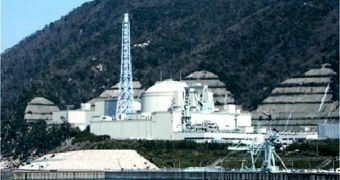The governor of Fukui Prefecture, in Japan, currently holds to his word the future of the experimental Monju nuclear power plant. The reason why this project is tremendously important is because it is the first fast breeder reactor (FBR) in the world that has ever achieved criticality. After more than 14 years of being shut down, the reactor is finally ready to be reopened, provided the governor gives his consent. If the facility is reopened, and experiments resume, then Japan could become the first country ever to “breed” nuclear fuel, ScienceNow reports.
The basic principle of breeding fuel is using a fast neutron reactor to produce more fissile material than is inserted in it at the beginning of the reaction. Japan already managed to achieve this once, but then an accident happened on December 8, 1995. A pipe gave way, and allowed for hundreds of kilograms of sodium to drip onto the floor below. After it reacted with water and the oxygen in the air, the chemical turned into caustic fumes, and blistering temperatures of up to several hundred degrees Celsius. Various misunderstandings allowed for the situation to persist for longer than normal, until eventually three tons of solidified sodium were found in the affected section of the reactor.
But repairs at the experimental facility have now concluded, and the chair of the Japan Atomic Energy Commission, Shunsuke Kondom, announced in a recent press conference that the approval for reopening could come as soon as this May or June. All that remains in the way of an agreement being signed between the central government and the governor is for the parties to settle on some points that are still up for debate. But many scientists and officials alike believe that the talks will be successful, and that the Monju FBR will be reopened.
Between the 1970’s and 1990’s, many countries, including France, Russia, the United States, Germany, and the United Kingdom, attempted to construct such reactors. The prospect of a facility producing more plutonium than it consumes attracted many politicians and scientists, as FBR could potentially be used as supply points for nuclear fuel, to be employed in other fields of research. All nations except for Japan abandoned the technology, however, mostly due to technical problems, costs, and concerns about safeguarding plutonium, which is used in nuclear weapons.

 14 DAY TRIAL //
14 DAY TRIAL //